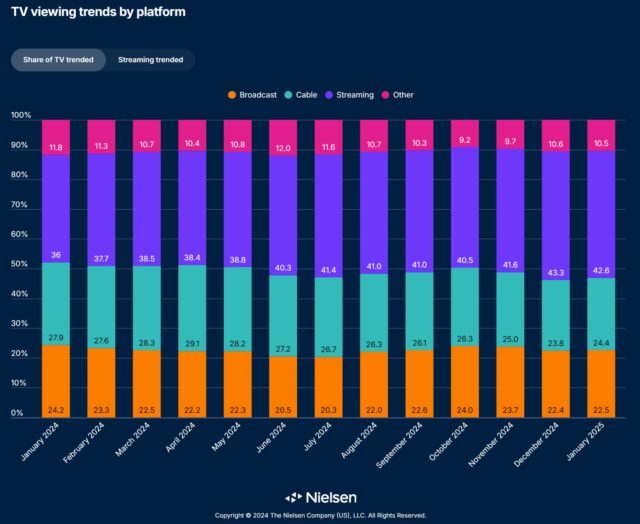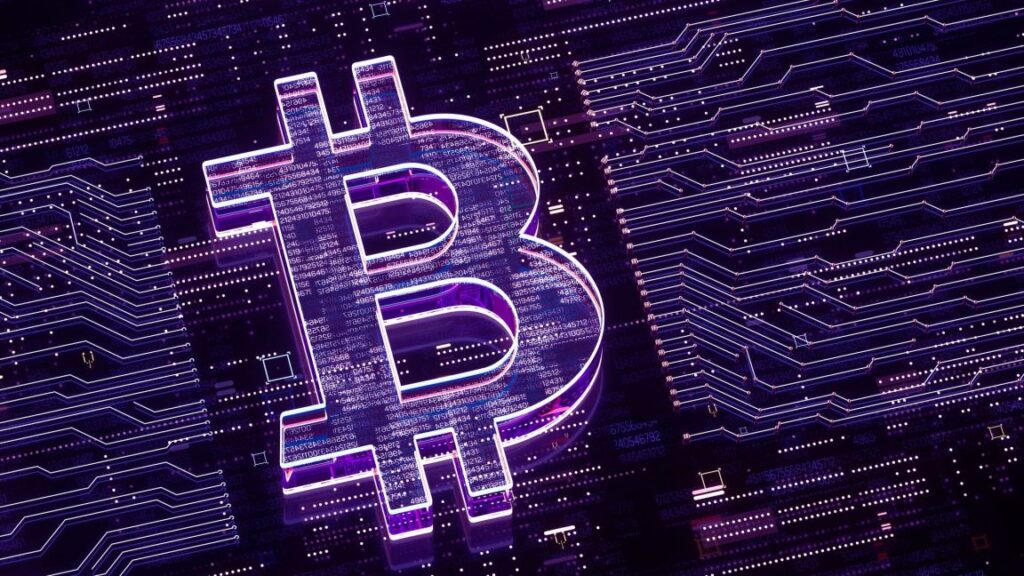China aims to recruit top US scientists as Trump tries to kill the CHIPS Act
Tech innovation in US likely to stall if Trump ends the CHIPS Act.
On Tuesday, Donald Trump finally made it clear to Congress that he wants to kill the CHIPS and Science Act—a $280 billion bipartisan law Joe Biden signed in 2022 to bring more semiconductor manufacturing into the US and put the country at the forefront of research and innovation.
Trump has long expressed frustration with the high cost of the CHIPS Act, telling Congress on Tuesday that it’s a “horrible, horrible thing” to “give hundreds of billions of dollars” in subsidies to companies that he claimed “take our money” and “don’t spend it,” Reuters reported.
“You should get rid of the CHIPS Act, and whatever is left over, Mr. Speaker, you should use it to reduce debt,” Trump said.
Instead, Trump potentially plans to shift the US from incentivizing chips manufacturing to punishing firms dependent on imports, threatening a 25 percent tariff on all semiconductor imports that could kick in as soon as April 2, CNBC reported.
The CHIPS Act was supposed to be Biden’s legacy, and because he made it a priority, much of the $52.7 billion in subsidies that Trump is criticizing has already been finalized. In 2022, Biden approved $39 billion in subsidies for semiconductor firms, and in his last weeks in office, he finalized more than $33 billion in awards, Reuters noted.
Among the awardees are leading semiconductor firms, including the Taiwan Semiconductor Manufacturing Co. (TSMC), Micron, Intel, Nvidia, and Samsung Electronics. Although Trump claims the CHIPS Act is one-sided and only serves to benefit firms, according to the Semiconductor Industry Association, the law sparked $450 billion in private investments increasing semiconductor production across 28 states by mid-2024.
With the CHIPS Act officially in Trump’s crosshairs, innovation appears likely to stall the longer that lawmakers remain unsettled on whether the law stays or goes. Some officials worried that Trump might interfere with Biden’s binding agreements with leading firms already holding up their end of the bargain, Reuters reported. For example, Micron plans to invest $100 billion in New York, and TSMC just committed to spending the same over the next four years to expand construction of US chips fabs, which is already well underway.
So far, Commerce Secretary Howard Lutnick has only indicated that he will review the finalized awards, noting that the US wouldn’t be giving TSMC any new awards, Reuters reported.
But the CHIPS Act does much more than provide subsidies to lure leading semiconductor companies into the US. For the first time in decades, the law created a new arm of the National Science Foundation (NSF)—the Directorate of Technology, Innovation, and Partnerships (TIP)—which functions unlike any other part of NSF and now appears existentially threatened.
Designed to take the country’s boldest ideas from basic research to real-world applications as fast as possible to make the US as competitive as possible, TIP helps advance all NSF research and was supposed to ensure US leadership in breakthrough technologies, including AI, 6G communications, biotech, quantum computing, and advanced manufacturing.
Biden allocated $20 billion to launch TIP through the CHIPS Act to accelerate technology development not just at top firms but also in small research settings across the US. But as soon as the Department of Government Efficiency (DOGE) started making cuts at NSF this year, TIP got hit the hardest. Seemingly TIP was targeted not because DOGE deemed it the least consequential but simply because it was the youngest directorate at NSF with the most workers in transition when Trump took office and DOGE abruptly announced it was terminating all “probationary” federal workers.
It took years to get TIP ready to flip the switch to accelerate tech innovation in the US. Without it, Trump risks setting the US back at a time when competitors like China are racing ahead and wooing US scientists who suddenly may not know if or when their funding is coming, NSF workers and industry groups told Ars.
Without TIP, NSF slows down
Last month, DOGE absolutely scrambled the NSF by forcing arbitrary cuts of so-called probationary employees—mostly young scientists, some of whom were in transition due to promotions. All those cuts were deemed illegal and finally reversed Monday by court order after weeks of internal chaos reportedly stalling or threatening to delay some of the highest-priority research in the US.
“The Office of Personnel Management does not have any authority whatsoever under any statute in the history of the universe to hire and fire employees at another agency,” US District Judge William Alsup said, calling probationary employees the “life blood” of government agencies.
Ars granted NSF workers anonymity to discuss how cuts were impacting research. At TIP, a federal worker told Ars that one of the probationary cuts in particular threatened to do the most damage.
Because TIP is so new, only one worker was trained to code automated tracking forms that helped decision-makers balance budgets and approve funding for projects across NSF in real time. Ars’ source likened it to holding the only key to the vault of NSF funding. And because TIP is so different from other NSF branches—hiring experts never pulled into NSF before and requiring customized resources to coordinate projects across all NSF fields of research—the insider suggested another government worker couldn’t easily be substituted. It could take possibly two years to hire and train a replacement on TIP’s unique tracking system, the source said, while TIP’s (and possibly all of NSF’s) efficiency is likely strained.
TIP has never been fully functional, the TIP insider confirmed, and could be choked off right as it starts helping to move the needle on US innovation. “Imagine where we are in two years and where China is in two years in quantum computing, semiconductors, or AI,” the TIP insider warned, pointing to China’s surprisingly advanced AI model, DeepSeek, as an indicator of how quickly tech leadership in global markets can change.
On Monday, NSF emailed all workers to confirm that all probationary workers would be reinstated “right away.” But the damage may already be done as it’s unclear how many workers plan to return. When TIP lost the coder—who was seemingly fired for a technicality while transitioning to a different payscale—NSF workers rushed to recommend the coder on LinkedIn, hoping to help the coder quickly secure another opportunity in industry or academia.
Ars could not reach the coder to confirm whether a return to TIP is in the cards. But Ars’ source at TIP and another NSF worker granted anonymity said that probationary workers may be hesitant to return because they are likely to be hit in any official reductions in force (RIFs) in the future.
“RIFs done the legal way are likely coming down the pipe, so these staff are not coming back to a place of security,” the NSF worker said. “The trust is broken. Even for those that choose to return, they’d be wise to be seeking other opportunities.”
And even losing the TIP coder for a couple of weeks likely slows NSF down at a time when the US seemingly can’t afford to lose a single day.
“We’re going to get murdered” if China sets the standard on 6G or AI, the TIP worker fears.
Rivals and allies wooing top US scientists
On Monday, six research and scientific associations, which described themselves as “leading organizations representing more than 305,000 people in computing, information technology, and technical innovation across US industry, academia, and government,” wrote to Congress demanding protections for the US research enterprise.
The groups warned that funding freezes and worker cuts at NSF—and other agencies, including the Department of Energy, the National Institute of Standards & Technology, the National Aeronautics and Space Administration, the National Institutes of Health—”have caused disruption and uncertainty” and threaten “long-lasting negative consequences for our competitiveness, national security, and economic prosperity.”
Deeming America’s technology leadership at risk, the groups pointed out that “in computing alone, a federal investment in research of just over $10 billion annually across 24 agencies and offices underpins a technology sector that contributes more than $2 trillion to the US GDP each year.” Cutting US investment “would be a costly mistake, far outweighing any short-term savings,” the groups warned.
In a separate statement, the Computing Research Association (CRA) called NSF cuts, in particular, a “deeply troubling, self-inflicted setback to US leadership in computing research” that appeared “penny-wise and pound-foolish.”
“NSF is one of the most efficient federal agencies, operating with less than 9 percent overhead costs,” CRA said. “These arbitrary terminations are not justified by performance metrics or efficiency concerns; rather, they represent a drastic and unnecessary weakening of the US research enterprise.”
Many NSF workers are afraid to speak up, the TIP worker told Ars, and industry seems similarly tight-lipped as confusion remains. Only one of the organizations urging Congress to intervene agreed to talk to Ars about the NSF cuts and the significance of TIP. Kathryn Kelley, the executive director of the Coalition for Academic Scientific Computation, confirmed that while members are more aligned with NSF’s Directorate for Computer and Information Science and Engineering and the Office of Advanced Cyberinfrastructure, her group agrees that all NSF cuts are “deeply” concerning.
“We agree that the uncertainty and erosion of trust within the NSF workforce could have long-lasting effects on the agency’s ability to attract and retain top talent, particularly in such specialized areas,” Kelley told Ars. “This situation underscores the need for continued investment in a stable, well-supported workforce to maintain the US’s leadership in science and innovation.”
Other industry sources unwilling to go on the record told Ars that arbitrary cuts largely affecting the youngest scientists at NSF threatened to disrupt a generation of researchers who envisioned long careers advancing US tech. There’s now a danger that those researchers may be lured to other countries heavily investing in science and currently advertising to attract displaced US researchers, including not just rivals like China but also allies like Denmark.
Those sources questioned the wisdom of using the Elon Musk-like approach of breaking the NSF to rebuild it when it’s already one of the leanest organizations in government.
Ars confirmed that some PhD programs have been cancelled, as many academic researchers are already widely concerned about delayed or cancelled grants and generally freaked out about where to get dependable funding outside the NSF. And in industry, some CHIPS Act projects have already been delayed, as companies like Intel try to manage timelines without knowing what’s happening with CHIPS funding, AP News reported.
“Obviously chip manufacturing companies will slow spending on programs they previously thought they were getting CHIPS Act funding for if not cancel those projects outright,” the Semiconductor Advisors, an industry group, forecasted in a statement last month.
The TIP insider told Ars that the CHIPS Act subsidies for large companies that Trump despises mostly fuel manufacturing in the US, while funding for smaller research facilities is what actually advances technology. Reducing efficiency at TIP would likely disrupt those researchers the most, the TIP worker suggested, proclaiming that’s why TIP must be saved at all costs.
China aims to recruit top US scientists as Trump tries to kill the CHIPS Act Read More »













